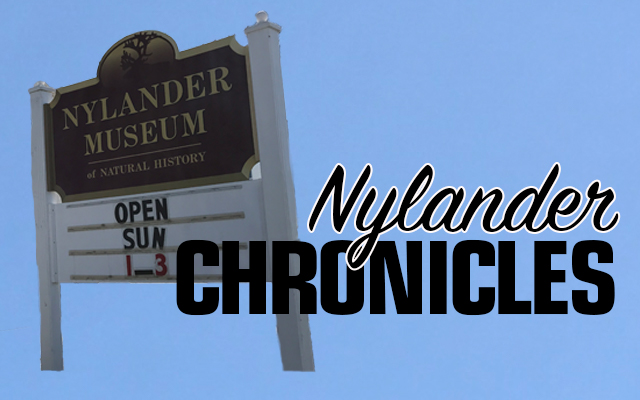In the following section of Olof Nylander’s writings, he discusses the Clinton Formation, (otherwise known as the Clinton Group), a large section of sedimentary rock that reaches through the Eastern United States.
The Clinton formation is largely shale, but also contains sandstone and other rock types. Olof Nylander’s observations of the area are very detailed, and explain the importance of this unique area to the local economy at the time, as well as to environmental diversity.
“The dark shaley rocks are outcropping in the ditches and as we approach the Woodland–New Sweden line the Manganiferous iron bearing layers are exposed. In a southwest direction this red haematite ore runs through Woodland and Perham and in a northeast direction is exposed on the hillsides in New Sweden at W.W. Thomas’ park, across Noah’s hill and the hills on the Madawaska Road about one-half mile northwest of the B. & A. R.R. Station at new Sweden.
“The iron bearing shales and slates are varied in color, red, steelblue, green and gray, and extend for about one mile in width. Immediately on the west of this iron bearing rock are schistose and more or less calcareous rocks; these extend north to the Beardsley Brook Valley and about three miles to the west. This strip including the iron bearing shale is about four miles wide and extends in a southwest direction through New Sweden, Woodland and Perham. There are many fine farms on this rock formation and it is the best section in Aroostook for apple orchards.
“Twenty-five to thirty years ago many apple orchards were planted and the trees borne abundance have large and very bright colored apples. The apple orchards have never been given much care and many have been entirely destroyed to give room for the larger potato fields. A number of the farmers in New Sweden have given their apple trees some attention and they have a ready sale to buyers from Van Buren and Fort Kent.
“The topography has changed considerably. The country is more hilly on the Clinton formation than over the Aroostook limestone area and there seems to be more large swampy areas and more springs on the side hills then there is in New Sweden, a great lot of land in forests and the same in Perham. There seems to be a tendency not to clear every piece of forest as land there is not well drained nor does it have a good deep soil for planting potatoes. It is in the long run better left to produce forests for wood and lumber for local use.
“There is another peculiarity about this four-mile strip of land running southeast from the Beardsley Brook Valley through New Sweden, Woodland and Perham, that stands out by itself. Many of the forest trees attain rather large size for Aroostook and the native flora was richer than anywhere else in this State. Wild flowers grow larger and are brighter colored than anywhere else.
“For over eleven years I spent a good part of the summers collecting the various forest plants and sending them to one of the largest nursery concerns in New England. They received plants from collectors in all parts of the United States and they spent some time exploring this region in 1904 their observations and judgement are to be taken as most valuable. Their statement is that they were the largest and best they received. I could not find anywhere else in the north of Maine as large and fine plants as this area produced. The clearing of land and forest fires have now practically cleaned this section of the remarkable flora it contained.”
This column is the work of the Nylander Museum Board of Trustees. The introduction was written by Jada Moulton.








